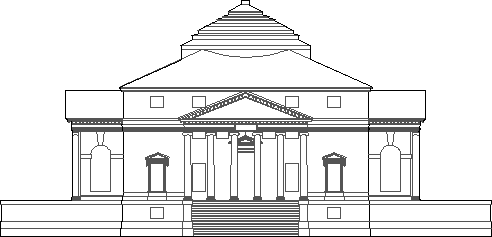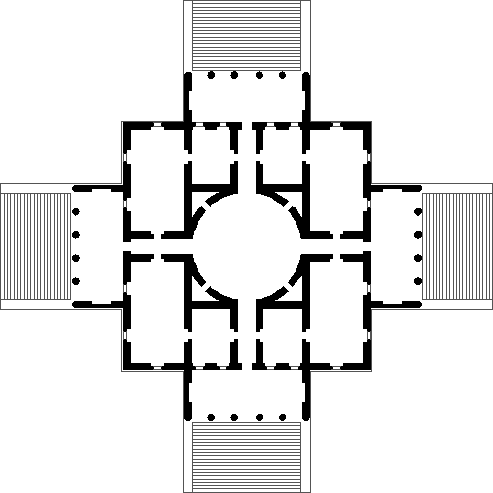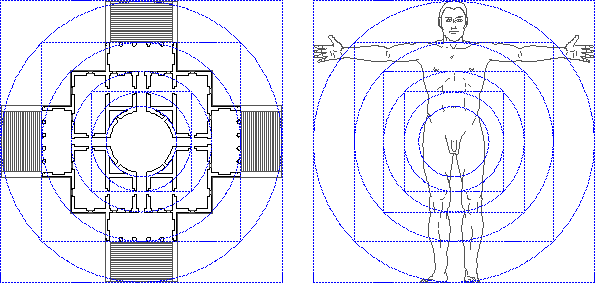Cornelis Bloemaart,
architect, painter, and engineer; b. about 1525.
Architect and engineer in Holland in the sixteenth century. According to Van Mander he was born at Dortrecht, Holland. He migrated later to Gorinchem, where his more famous son, the painter Abraham Bloemaart, was born. He afterward appears at Hertogenbosch (1566), and in 1576 was entered in the guild of saddlers at Utrecht as architect and military engineer. In 1591 he became engineer to the city of Amsterdam.
| |
Andrea Palladio, Villa Almerico Capra also called La Rotunda (Vicenza: 1566), cad collection.


| |
Andrea Palladio's oeuvre is particularly rich and includes many types, of which the Villa Rotunda in Vicenza is especially famous. Here the subordinate spaces of a centralized plan are proportionally related to form a rhythmical group, a scheme which goes beyond the additive repetition of the early Renaissance. The Rotunda's disposition appears conservative, but this was in reality a function of the surrounding landscape, as shown by Palladio's own words: "and therefore, as it enjoys from every part most beautiful views, some of which are limited, some more extended, and others that terminate with the horizon; there are loggias mad on all the four fronts." Palladio, in fact, describes his projects in relation to the different sites or situations in question, and thus proves to be a true Cinquecento architect, in spite of his preoccupation with ideal form.
Christian Norberg-Schulz, Meaning in Western Architecture (New York: Praeger Publishers, 1974), p. 262.
When Norberg-Schulz refers to the proportions of the Villa Rotunda forming a rhythmical group, he was evidently unaware of just how mathematically rhythmical the plan of the Villa Rotunda indeed is. In Serlio's first book on architecture, Geometry, there is a diagram that illustrates how to easily construct/draw a circle or square that is twice or half the area of any given circle or square, and this same diagram aligns perfectly with the plan of the Villa Rotunda. It is hard to imagine that Palladio himself was unaware of this diagram, as the mathematical principle was probably widely known and the correspondance of the plan of the Villa Rotunda and the circle/square diagram is most unlikely to have been a chance occurrance.

What is of even more interest is that the same circle/square diagram relates to the frontal proprotions of the human body. Could the consecutive circle/square diagram be the long lost canon of Polyclitus, the formula used to calculate the best proportions when sculpting a human figure?

|



